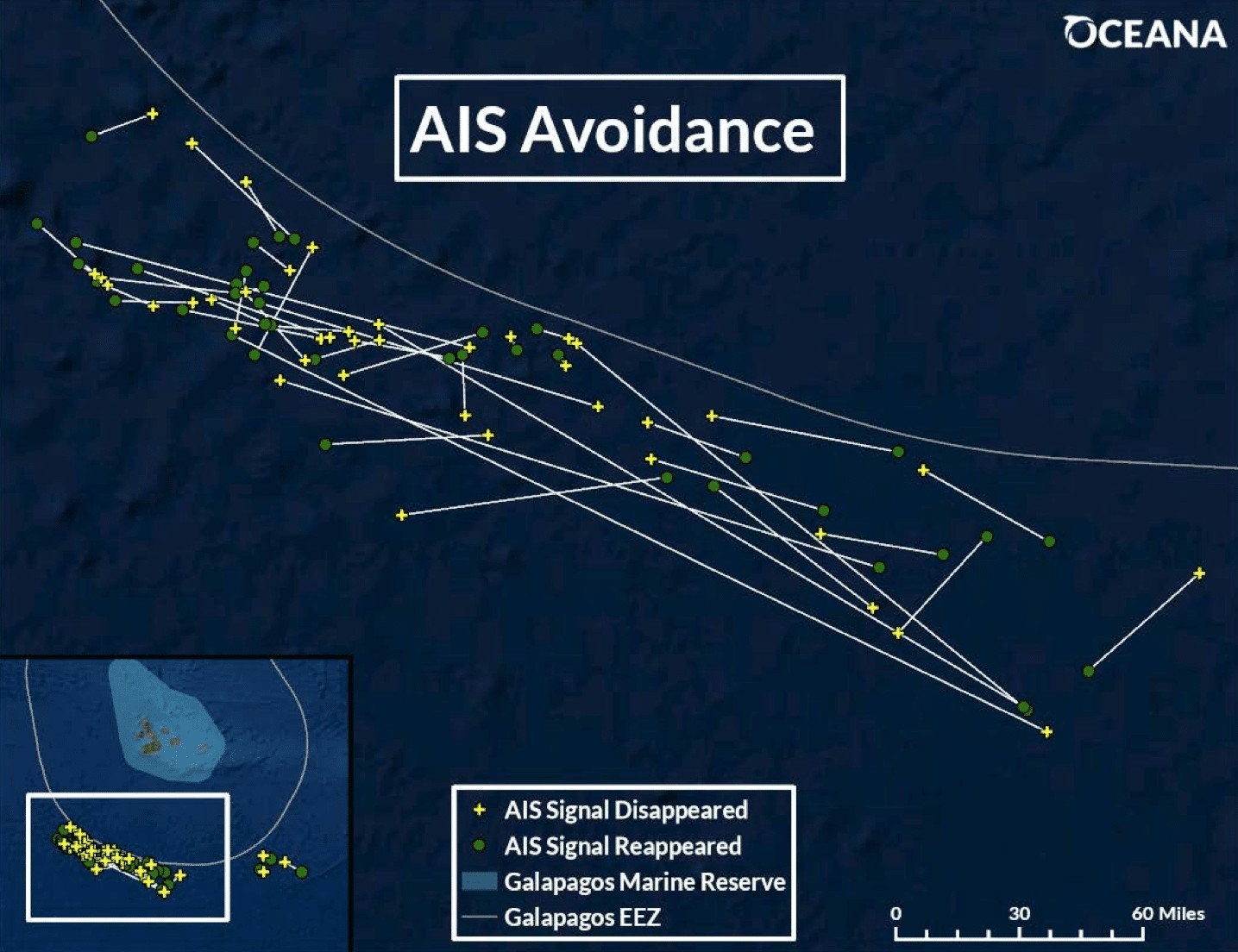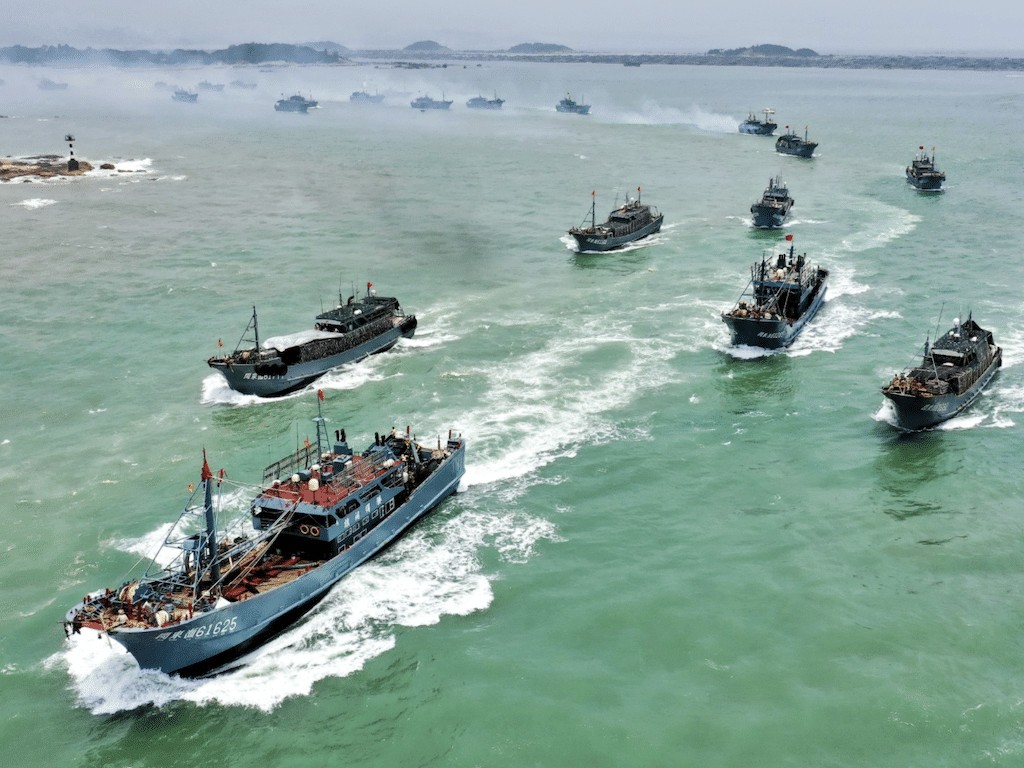A recent Oceana report finds that Chinese fishing vessels purposefully disabled their tracking devices when operating near the Galapagos Islands to mask their positions.
Oceana’s analysis finds nearly 300 Chinese vessels pillaging the waters off the Galapagos Marine Reserve primarily for squid, which are essential to the diet of iconic local species such as fur seals and hammerhead sharks, as well as for many commercial and recreational fish species, including tuna and billfish, that contribute to the local economy.
Using the Global Fishing Watch — an independent nonprofit founded by Oceana in partnership with Google and SkyTruth — mapping tool, Oceana analyzed data from fishing vessels found near the Galapagos Islands from July 13th to August 13, 2020.
During this one-month period, Oceana documented the Chinese fleet, which was primarily fishing for squid, logged more than 73,000 total hours of apparent fishing. In fact, 99% of the visible fishing activity off the Galapagos Islands during this one-month period was by Chinese-flagged vessels.
As part of its analysis, Oceana also documented Chinese vessels apparently disabling their public tracking devices, providing conflicting vessel identification information and engaging in potentially suspect transshipment practices, all of which can enable illicit activities.
The report states:
“Between July 13 and Aug. 13, there were 43 instances in which Chinese fishing vessels with AIS transponders appeared to turn off their AIS. On average, these vessels had AIS gaps for two days at a time. The vessel with the longest gap in AIS detection, 17 days, was also potentially involved in a transshipment event with a reefer several hours before appearing to turn its AIS off.”

According to Oceana, the above image “shows instances in which vessels appear to switch their AIS off (yellow) and then reappear (green). With AIS off, vessels can transit into the Ecuadorian EEZ to fish or hide transshipment events.”
According to Dr. Marla Valentine, Oceana’s illegal fishing and transparency analyst:
“For a month, the world watched and wondered what China’s enormous fishing fleet was doing off the Galapagos Islands, but now we know. This massive and ongoing fishing effort of China’s fleet threatens the Galapagos Islands, the rare species that only call it home and everyone that depends on it for food and livelihoods. Sadly, this is just the tip of the iceberg when it comes to the impact of China’s huge distant-water fishing fleet on our oceans. The situation playing out in the Galapagos should raise serious questions and concerns about the impact China’s massive fishing fleet is having on the oceans it sails.”
Beth Lowell, deputy vice president for Oceana’s U.S. campaigns, said:
“The governments of the world must work together to ensure that all seafood is safe, legally caught, responsibly sourced and honestly labeled to protect the oceans and the people who depend upon them.”
Read the full report here.

